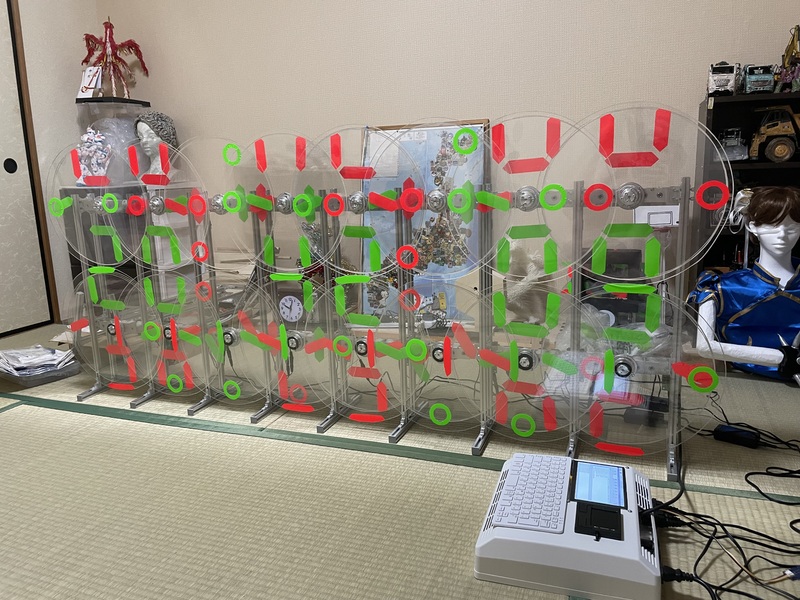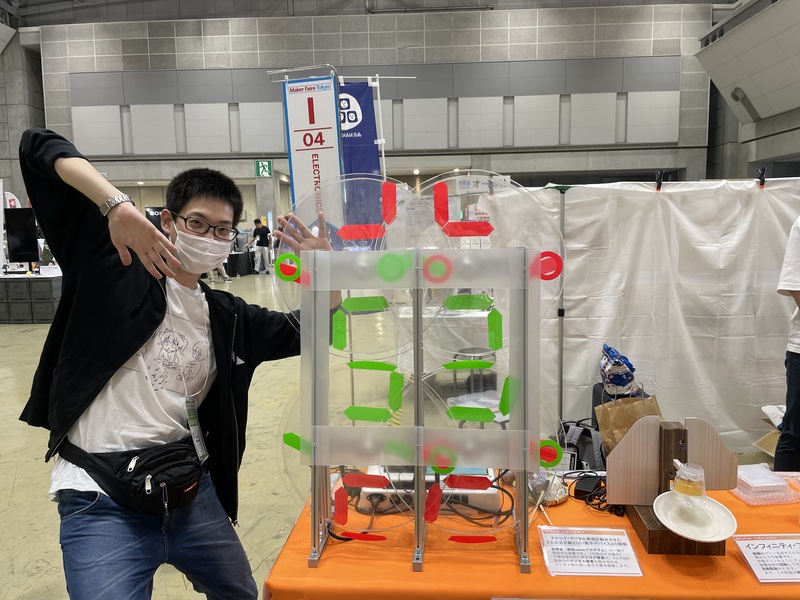Interviews

Interviewer & Japanese Writer: Yamamoto Takaya; Translation & Editing: Matthew Cherry
BB Korry was hard at work on improving his Time Melt Clock. He had already created the clock before his time in the INNO-vation Program, so when he was selected for the program’s Disruptive Challenge in 2021, he decided to start improving the device into a more refined state. The first order of business was to increase the number of digits it could display at once.
The clock had been developed to display two numbers at one time. For example, by displaying the numbers 12 and 36 in succession, the time 12:36 could be expressed. By creating more of these devices and lining them up side by side, the number of digits able to be displayed would theoretically be limitless. Showing six numbers side-by-side would allow for the display of the current hour, minutes, and seconds.
There was still a challenge that BB Korry needed to tackle: powering the clocks. He expanded the capabilities of the clock during the INNO-vation Program, but the larger number of digits displayed led to a shortage of electrical power. “I did the entire development process in my own home using standard electrical outlets. It was through that process that I realized one outlet didn’t provide enough power to run all of the parts simultaneously,” he said. “That’s why I implemented an AC adapter for each set of digits.”
It wasn’t just the amount of digits displayed that improved during the development process. BB Korry also implemented various symbols into the clock, including a plus and minus sign, colon, underscore, the degree symbol, and slash. Using the colon allows for a more proper display of the time, such as 12:36:10. The temperature can also be displayed using the degree symbol. Fractions such as 8/40 can also be displayed using the slash symbol.

A variant of the Time Melt Clock displaying 20:42:09.
“Businesses could use this in exhibits in place of signboards to display information about products, such as fuel consumption or temperature. I hope it can be used in various circumstances to not only capture people’s attention but make it difficult to look away as well,” BB Korry explained about his aspirations.
There are still a few issues to work out before that can happen, he says. When he took it to an exhibition one day, he discovered that the device suddenly stopped moving. “I didn’t realize this at home, but once I took it to an exhibit one of its weak points became very clear. The transparent discs are what’s used to display the digits and symbols, but when I took them to a place warmer than room temperature, they stuck together and wouldn’t move at all,” BB Korry explained about the troubles he faced with presenting the clock. “Some of the parts are also fragile, so they can easily break during transport. I still need to work on the durability of the clock overall.”

The clock was exhibited at Make Faire Tokyo.
In part 3, we’ll take a look at BB Korry’s activities after the INNO-vation Program.

